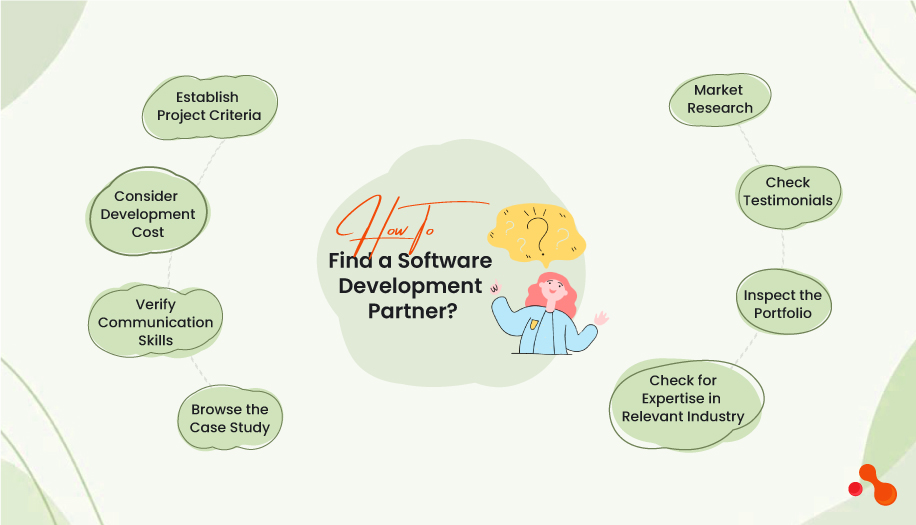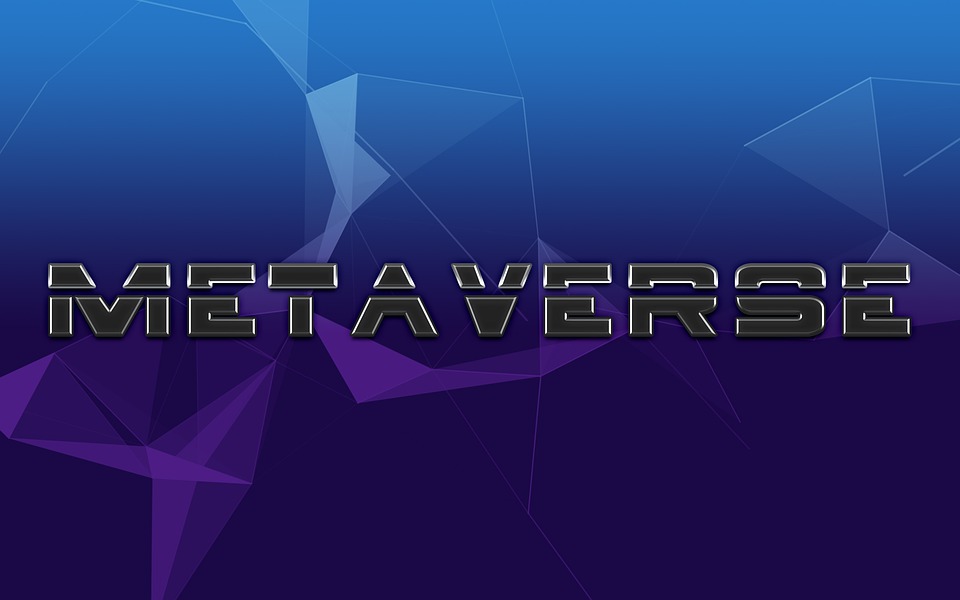Technology
How to Find a Reliable Software Development Partner?
by Author
-
Wednesday, November 22, 2023
107 Views
Introduction
In the vast realm of software development, choosing the right partner is like finding the perfect teammate for your project. This blog will explore why this decision is biqle.ru crucial and how a reliable partner can be the key to the success of your software venture. Imagine them as the backbone of your project, ensuring it stands strong and functions seamlessly. Let’s delve into the significance of making this choice wisely and understanding the impact it can have on the journey from idea to a successful software solution.
Understanding Your Requirements
A. Define Your Project Goals and Objectives
- Start with a Clear Vision: Clearly outline what you want to achieve with your software project.
- Define Objectives: Break down your goals into specific, measurable objectives for a focused approach.
- Align with Stakeholders: Ensure that all stakeholders are on the same page regarding project goals.
B. Identify Specific Features and Functionalities
- List Must-Have Features: Identify the core features your software must have for success.
- Consider User Experience: Think about functionalities that enhance the user experience.
- Prioritize Features: Rank features based on their importance to your project’s success.
C. Consider Scalability and Future Expansion
- Assess Long-Term Needs: Think beyond the current project; consider future enhancements.
- Scalability Planning: Ensure the software can handle growth without significant rework.
- Flexible Architecture: Opt for a partner who understands the importance of adaptable and scalable solutions.
By clearly defining your goals, features, and considering future needs, you set the foundation for finding a software development partner that aligns with your project vision.
Researching Potential Partners
A. Conducting an Initial Online Search
- Google Search:
- Use search engines to find potential partners.
- Focus on keywords like “hire developers” and “hire remote developers.”
- Explore companies specializing in your technology needs.
- Check Reviews:
- Look for reviews on platforms like Clutch or Glassdoor.
- Pay attention to both positive and negative feedback.
- Evaluate overall satisfaction and common themes in reviews.
B. Seeking Recommendations from Industry Peers and Networks
- Networking Events:
- Attend industry conferences or virtual events.
- Network with professionals who have experience in software development.
- Ask for recommendations based on your project requirements.
- Online Communities:
- Join forums or online communities related to software development.
- Seek advice from peers who have hired remote developers.
- Inquire about their experiences with specific companies, including “Acquaint Softtech.”
C. Reviewing Case Studies and Client Testimonials
- Company Websites:
- Visit the websites of potential partners, including “Acquaint Softtech.”
- Look for case studies showcasing their successful projects.
- Focus on projects similar to your requirements for a better understanding.
- Client Testimonials:
- Read client testimonials on the partner’s website.
- Contact previous usps liteblue clients if possible to get direct feedback.
- Consider the authenticity and variety of testimonials.
By following these steps, you can efficiently research potential software development partners, ensuring that you gather diverse perspectives and insights. This approach helps you make an informed decision and increases the likelihood of a successful partnership.
Evaluating Experience and Expertise
When you’re on the lookout to hire developers or hire remote developers for your project, assessing their experience and expertise is crucial. Here’s a straightforward guide:
A. Assessing the Partner’s Industry Experience
- Look for Relevant Industry Experience: Ensure the software development partner has experience in your specific industry. This helps them understand the unique challenges and requirements of your business.
- Ask for Case Studies: Request case studies or examples of projects they’ve worked on in your industry. Real-world examples can demonstrate their problem-solving abilities.
B. Reviewing Their Portfolio and Previous Projects
- Examine Their Portfolio: Take a close look at the partner’s portfolio. Look for diversity in projects, indicating their ability to handle different types of challenges.
- Check for Similar Projects: If they have successfully completed projects similar to yours, it’s a positive sign. Similar past experiences suggest they are familiar with the kind of work you need.
C. Checking if They Specialize in Your Technology Stack
- Compatibility with Your Tech Stack: Ensure that the partner is well-versed in the technologies your project requires. This includes programming languages, frameworks, and other tools.
- Ask About Acquaint Softtech: If you are considering a specific company like Acquaint Softtech, inquire about their expertise in your technology stack. A specialized focus can mean smoother and more efficient development.
By following these steps, you’ll be better equipped to make an informed decision when usps lite blue hiring developers, whether you’re considering Acquaint Softtech or any other software development partner.
Ensuring Technical Proficiency
A. Evaluating Their Technical Skills and Capabilities
- Look for a strong track record in delivering successful projects.
- Assess the complexity of past projects they’ve handled.
- Check if they have experience in your industry or a related field.
B. Assessing Their Understanding of the Latest Industry Trends
- Inquire about their awareness of current software development trends.
- Ensure they stay updated on emerging technologies and methodologies.
- Check if they have worked on projects with similar technological requirements.
C. Verifying Their Expertise in Relevant Programming Languages and Frameworks
- Confirm their proficiency in the specific programming languages your project requires.
- Check if they are well-versed in the frameworks relevant to your project.
- Ensure they have experience with technologies commonly used in your industry.
Why Technical Proficiency Matters When Hiring Developers:
- Efficient Problem Solving: Skilled developers can troubleshoot and solve challenges swiftly.
- Future-Proofing: A tech-savvy partner is more likely to adapt to evolving industry trends.
- Smooth Collaboration: Shared understanding of technologies fosters effective communication.
- Acquaint Softtech Advantage: Consider reputable agencies like Acquaint Softtech known for their technical prowess.
Assessing Communication and Collaboration
In the world of hiring developers, especially remote ones like those from Acquaint Softtech, effective communication and seamless collaboration are key factors for project success. Here’s a breakdown of what to look for when evaluating a software development partner:
A. Evaluating Communication Style and Responsiveness
- Clear and Timely Communication: Ensure the team communicates clearly, concisely, and in a timely manner.
- Responsiveness: Evaluate how quickly they respond to emails, messages, and calls. Prompt responsiveness is crucial for remote collaboration.
B. Understanding Project Management and Collaboration Processes
- Project Management Tools: Check if the team uses project management tools like Jira, Trello, or Asana to track tasks and milestones.
- Collaboration Platforms: Assess their use of collaboration platforms like Slack or Microsoft Teams for real-time communication and file sharing.
- Reporting Mechanisms: Understand how they provide project updates and reports. Regular updates keep you informed about the project’s progress.
C. Checking Language Proficiency and Time Zone Compatibility
- Language Proficiency: Confirm that the developers are proficient in the language you prefer for communication. Miscommunication can lead to errors.
- Time Zone Alignment: Assess the time zone difference between your location and the development team’s base. Choose a partner with overlapping working hours to facilitate real-time collaboration.
Quality Assurance and Testing
A. Inquiring about their QA and Testing Processes
- Objective: Understand how the development team ensures the quality of the software.
- Key Questions:
- What is your approach to quality assurance?
- Can you describe the testing methodologies you employ?
B. Ensuring they Follow Industry Best Practices for Quality Assurance
- Objective: Verify that the development partner adheres to recognized standards.
- Key Points:
- Confirm that they comply with industry standards such as ISO or CMMI.
- Check if they conduct regular internal audits for process improvement.
C. Discussing their Approach to Identifying and Fixing Bugs
- Objective: Ensure a proactive approach to bug identification and resolution.
- Key Considerations:
- Inquire about their bug tracking and reporting tools.
- Ask how they prioritize and address different types of bugs.
Why It Matters
- Smooth Project Flow: A robust quality assurance process ensures a streamlined development process.
- Reduced Post-Launch Issues: Effective bug identification and resolution lead to fewer problems post-launch.
- Enhanced User Experience: Rigorous testing contributes to a positive user experience.
Why Acquaint Softtech?
- Proven Track Record: Acquaint Softtech has a history of delivering high-quality software solutions.
- Adherence to Best Practices: They follow industry best practices to ensure the reliability of their deliverables.
- Transparent Bug Resolution: Acquaint Softtech is committed to transparently resolving bugs promptly.
In the competitive landscape When you hire remote developers, prioritizing quality assurance and testing is crucial. Acquaint Softtech’s commitment to best practices in these areas makes them a reliable choice for your software development needs.
Legal and Contractual Considerations
Choosing a software development partner is an exciting step, but it’s crucial to ensure that the legal and contractual aspects are well-covered to avoid any future hiccups. Here’s a straightforward guide:
A. Intellectual Property Rights and Ownership
- Understand Ownership: Clearly establish who owns the intellectual property rights to the software.
- Define Ownership Transfer: Specify conditions under which the ownership might transfer, especially if it involves customizations or additional features.
B. Reviewing Terms and Conditions
- Read the Fine Print: Take the time to carefully read and understand all terms and conditions outlined in the contract.
- Clarify Ambiguities: If something is unclear, don’t hesitate to ask questions and seek clarification to avoid misunderstandings later on.
- Highlight Key Points: Identify and highlight key points, such as project timelines, responsibilities, and any potential penalties.
C. Clear Scope of Work and Milestones
- Define Scope: Ensure that the contract clearly outlines the scope of work, detailing what is included and what is not.
- Milestone Definition: Clearly define project milestones to track progress effectively.
- Align Expectations: Make sure both parties have a shared understanding of what constitutes the completion of each milestone.
Remember, a transparent and well-defined legal framework sets the stage for a successful partnership. Don’t rush through this process—take the time to get it right from the beginning!
Budget and Payment Terms
Navigating the financial aspects of your software development partnership is crucial for a smooth collaboration. Here’s a breakdown of what you need to consider:
A. Understanding the Pricing Structure
- Fixed Price:
- Clear, predetermined cost for the entire project.
- Suitable for well-defined projects with minimal changes expected.
- Time and Material:
- Pay based on the actual time and resources invested.
- Ideal for projects with evolving requirements or frequent changes.
- Milestone-Based Payments:
- Payments tied to project milestones.
- Ensures progress before significant financial commitments.
B. Negotiating a Reasonable Budget for Your Project
- Scope of Work:
- Clearly define project requirements to avoid scope creep.
- Negotiate a budget that aligns with the agreed-upon scope.
- Flexibility:
- Be open to adjustments but ensure changes are adequately reflected in the budget.
- Seek transparency in cost breakdowns for better understanding.
- Comparative Analysis:
- Research industry standards and compare with the proposed budget.
- Negotiate based on a fair market value for the services provided.
C. Clarifying Payment Terms and Schedules
- Payment Structure:
- Establish a clear payment breakdown (e.g., upfront, milestone-based, recurring).
- Align payment phases with project milestones.
- Late Payment Policies:
- Clearly outline consequences and penalties for delayed payments.
- Establish a grace period and communicate expectations.
- Currency and Method:
- Specify the currency for transactions.
- Choose a secure and mutually agreed-upon payment method.
Tips for Successful Budget and Payment Negotiations
- Open Communication:
- Foster open dialogue about budget concerns and expectations.
- Address any uncertainties upfront to avoid misunderstandings.
- Detailed Contracts:
- Ensure all financial agreements are explicitly stated in the contract.
- Include provisions for potential changes and their impact on the budget.
- Contingency Planning:
- Discuss and agree on how unexpected costs or changes will be handled.
- Establish a contingency fund for unforeseen circumstances.
By understanding the pricing structure, negotiating effectively, and establishing clear payment terms, you set the foundation for a transparent and mutually beneficial financial arrangement with your software development partner. This clarity not only promotes a healthy working relationship but also helps avoid potential conflicts down the road.
Ongoing Support and Maintenance
Software development doesn’t end at the launch—it’s an ongoing journey that requires reliable support and maintenance. Here’s what you need to know:
A. Inquiring about Post-Launch Support and Maintenance
- Why it Matters:
- Even the best software may face glitches or issues post-launch.
- Users might encounter problems or have questions, making ongoing support crucial.
- Questions to Ask:
- What kind of support is offered after the software goes live?
- How can users reach out for assistance?
- Is there a dedicated support team?
B. Discussing Service-Level Agreements (SLAs) and Response Times
- What SLAs Are:
- SLAs are like a promise – they define the level of service you can expect.
- Response times outline how quickly your issues will be addressed.
- Key Points to Discuss:
- Clarify the SLAs for response times.
- Ensure you understand what each level of support entails.
- Ask about the process for escalating urgent issues.
C. Ensuring a Plan for Updates, Patches, and Ongoing Improvements
- Why Regular Updates Matter:
- Technology evolves, and software must adapt.
- Regular updates and patches keep your software secure and efficient.
- Questions to Address:
- How frequently are updates released?
- Is there a systematic approach for handling security patches?
- Discuss plans for incorporating user feedback and making continuous improvements.
Conclusion
In conclusion, selecting the right software development partner is a crucial step for your project’s success. Take your time in the selection process to ensure they align with your goals. Once partnered, maintain open communication and collaboration, fostering a strong working relationship. A successful partnership can lead to streamlined development, timely delivery, and high-quality results. By prioritizing these elements, you set the foundation for a mutually beneficial collaboration that positively impacts your software project.






